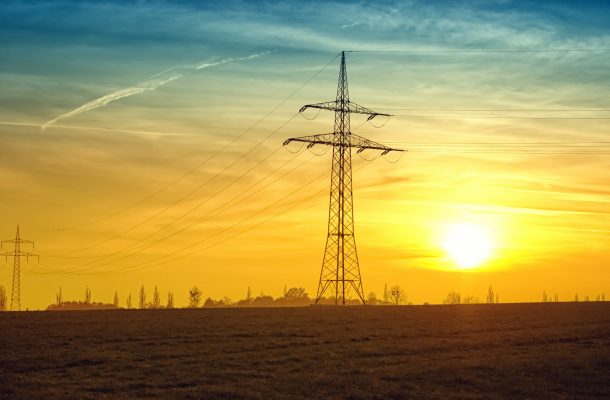Will Victoria run out of power next summer?

There is almost a panic about how Victoria will survive next summer given that about 700 MW of coal and gas plants are offline for up to 6 months at Loy Yang A and Mortlake while the remaining brown coal plants are being worked “very hard”.
Firstly the brown coal plants are not being worked very hard. Load factor has actually fallen from 2010-2012 when 6.2 GW of capacity produced a bit over 51,000 GWh per year or 93% CF.
In the last 12 months 4.73 GW of generators produced 32,900 GWh or 79 % CF so in theory we have more headroom. That is partly offset by age and fewer generators, 1 out of 10 failing is worse than than 1 out of 15 but unless the coal plants have become hopelessly unreliable we have more spare capacity than we used to.
Fossil energy production during 25th January 2019.
Another point to appreciate is that while output of individual wind and solar farms vary, combined renewable output a) is never zero and b) does not just suddenly stop like the pink or green lines above. In the graph below there is a small glitch in the large scale solar (red) but at that time only two plants were on line.
By next summer there will be six so any glitch in the output of one plant will be smoothed out. The biggest dip was a reduction in hydro but that was much smaller than the loss of a 500 MW coal plant
Illustration 2: Victorian Renewable Energy 25th January 2019. From 9-5 in 2020 there will be at least 750 MW of extra wind and solar.
It seems that Victoria should plan for 40-45% coal outages next summer. At 10:40 AM on the 25th of January 4,700MW of coal capacity was only generating 3,145 MW (67%) and yet the system was only short 200 MW. If 45% of the coal was offline that would result in a further reduction of 500 MW
So planning for 6-800 MW of additional generation next summer should cover any shortage.
To guarantee 600 MW of solar from 8am until 5pm during a hot summer’s day, the system needs about 800 MW of tracking solar or about 1,200 MW of rooftop solar.
Victoria will add about 400 MW of rooftop solar including large scale factories etc and 600-800 MW of tracking solar by next January (Kiamal stage 1- 200 MW, Numurkah – 100 MW, Yatpool 106 MW, Cohuna – 34 MW, Karadoc 106 MW).
Winton 98 MW and Carwarp 100 MW will be close behind so the combined solar should easily provide an extra average 6-700 MW from 8-5. There are another 4 or 5 solar farms in development, we need to see what we can do to move them along for the following summer
In addition there will be wind from Crowlands, Yendon, Berrybank, Timboon West and Yarwong, Mt. Gellibrand and Murra Warra Stage 1 which should all be near fully commissioned by then, while Mortlake South, Cherry Tree Hill, Bulganna and Stockyard Hill will also be supplying some power, even if nowhere near full capacity.
In total there will be a minimum of 300 MW of additional wind power. When one considers that wind only supplied an average of about 470 MW between 11:30 and 4:30 on January 25th, that makes a significant differnce
At 1 pm on 25th of January imports from NSW were zero. With well over 1,200 MW of new wind and solar in southern NSW, it is unlikely that the zero exports to Victoria will be repeated and it is quite likely that imports could even come down through Mildura. Wind and solar around Broken Hill is already constrained and Victoria may prove a useful outlet for some of it.
Another key variable is lower stress leading to less likelhood of coal station trips. It can be seen from the graph above that some units were running at 106% of rated capacity until they didn’t.
With more wind during the morning and tracking solar already at 70% output by 8 am there should be no need to run coal and gas plants at quite the same rate. If they are running at 90-95% CF insteand of 106%, they are far less likely to fail.
So if coal is maintained at only 70% capacity factor, imports from NSW are up by only 200 MW and wind and solar increase as projected, we will have 300 MW extra coal, 2-600 MW extra imports, 4-500 MW of tracking solar, 300 MW of extra wind and an average of 200-250 MW of rooftop solar + 100 MW of storage running at 20-50%, for a total of around 1500 MW increase. Therefore Victoria should overcome a 200-800 MW shortage quite easily
Or put a different way if all the coal plants that were offline last year + the Loy Yang A unit + the Mortlake unit , it would still be covered by 950-1,000 MW of extra wind solar and imports with an extra 50-100 MW of demand response and about 100 MW of recently commissioned storage.
We also need to get serious about grid controlled loads, particularly chillers and hot water. We should have a 5 year target of 1.5-2 GW of controllable demand with a short term target of 500-600 MW next summer.
Demand response is common in most other distribution grids including “redneck” Texas, the PJM Eastern US market, nuclear powered France and the UK and hydro dominant Nordic markets.
Typically they aim for up to 10% of peak demand which in our case is about 900 MW. However IOT eneables much broader application to small loads and a medium term target as high as 30% of peak load is feasible. An ideal opportunity is the cold chain.
If every large cold store in the state was subsidised to follow this example that would take about 500 MW or more off the peak load for far less cost than adding 500 MW of generation. And it would save the system and particularly the coolstore owners money every day not just on annual peak days.
The key question then is will hydro and imports hold up and how much storage will be added.
Hydro
Although dam levels are lower than last year, higher wind and solar generation allows the water to be used more sparingly, so peak power can be maintained for shorter periods.
For example from mid-day 5th of September to mid-day 9th of September wind generated almost 18% of Victorian demand so hydro only ran at an average of 7% capacity supplying 2.6% of Victorian demand, vs a typical 6%, while even in wintery conditions solar provided 5%
Storage
About two years ago after the state called its first storage tenders and some estimates suggested that we needed about 300 MW probably 400-500MWh. We have installed about 80 MW/50MWh MW but that wasn’t fully commissioned in January, so 300 MW would have eliminated load shedding, thus achieving another 200 MW of storage would be a good idea.
It may well be a combination of 50-100 MW at wind solar farms that are more or less required by AEMO for grid stability now, specific storage like the two the state has already subsidised at Gannawarra and Ballarat, more customer storage on Virtual Power Plants and batteries at substations and even street batteries.
VPPs and near load storage are a key part of the long term solution because they reduce grid stress, which storage at generators doesn’t. They also improve system resilience as they can ride through transmission outages.
If we can get 25,000 single phase battery installations with 5-10 kW at household and small business level and 3,000 15-100 kW systems at schools, hospitals, police stations, medium businesses etc that is about 200 MW
The other opportunity is batteries in substations. There are more than 200 zone substations in Victoria as well as tramways and railway installations. Containerised installations of 0.5-5 MW 2-3 hours at each one are much cheaper to buy and easier to control than thousands of consumer owned batteries.
Distribution system batteries have a huge number of advantages for voltage control, peak shaving, reduced expenditure on feeders and transformers, lower peak losses, isolation from transmission faults etc etc. however under the current rules they cannot be operated by distributors as they are classed as generators.
Victoria could call tenders from Independent Power producers to locate storage at substations. As the batteries will save money for the distributors, the tender could have two parts. The distributors could offer to pay an annual fee for the battery and the government would underwrite the revenue to the battery owner after the battery makes profits from trading, FCAS etc.
2020/21
By the following summer there will be a further 400MW of rooftop solar, 1,400-1,900 MW of wind and another 500-700 MW of large scale solar. On 25th January winds were quite low, normally hot weather in Victoria coincides with hot northerlies, but capacity on that day did not drop below 21%. New windfarms perform much better in low winds due to bigger rotors, taller towers and more efficient equipment.
At a ground wind speed of 12 km/h the old wind turbines probably will not operate, The newest units will be up to 25% of rated output so one would expect total wind output in low wind conditions will triple by 2021. Similarly tracking solar will reduce morning and evening peaks much more effectively than rooftop solar
Over the 24-30 months from January 2019, annual wind and solar generation in Victoria will rise from about 6,000 GWh in 2018 to an annualised 20,000 GWh. If another 500 MW of wind and 500 MW of tracking solar is added to the current list, Victoria will hit 50% renewables sometime in 2022/23
Conclusion
In conclusion, unless all the following happen together: 500 MW+ of interconnection is lost, winds are very low for a hot day, around 1,500-2,000 MW of coal and gas are unavailable, no new storage or backup generation is added, demand response is not expanded and the reconfiguration of Heywood interconnector from 500MW to 650MW SA-Victoria is not completed there will not be a shortage of generation next summer.
It may be expensive but it will be available.
Peter Farley is the President of the Victorian Vernier Society and former Deputy President of the Victorian Committee of Engineers Australia. He has also served as a Director of the Inner Melbourne VET Cluster for more than a decade.













